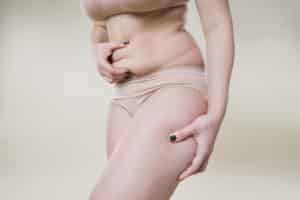
How Hip Liposuction is Performed
Many women undergo liposuction of the hip and outer thigh area to restore optimal proportions between their upper and lower body. Sometimes, liposuction here extends upward to the flank area, as well. This can create smooth transitions up the side of the body.
Liposuction is performed on an outpatient basis through small incisions. Patients are given general anesthesia, which puts them into an unconscious state. Vital signs are monitored throughout the procedure by a board-certified anesthesiologist. After anesthesia has been administered, incisions are made as discreetly as possible in the thigh or hip area. A thin tube is inserted and moved carefully in a back-and-forth motion. As this happens, channels of fat are suctioned from the subcutaneous area beneath the skin. Dr. Austin uses suction-assisted and ultrasound-assisted liposuction techniques and can discuss which he recommends during the consultation visit.
One of the benefits of liposuction is that the procedure is minimally-invasive. Patients’ scars heal over time to be nearly invisible and they need very little downtime to recover unless they have combined liposuction with another procedure such as a thigh lift or abdominoplasty. Usually, liposuction patients are back to work within two weeks. Swelling continually resolves over up to 6 weeks.
Saddlebags can be a persistent problem that affects confidence, comfort, and how clothing fits. Liposuction can be an excellent solution, restoring feminine curves and proportions along the midsection. For more information on liposuction for saddlebags and other problem areas, schedule a consultation at our Salem, OR office. Call 503-561-7000.
